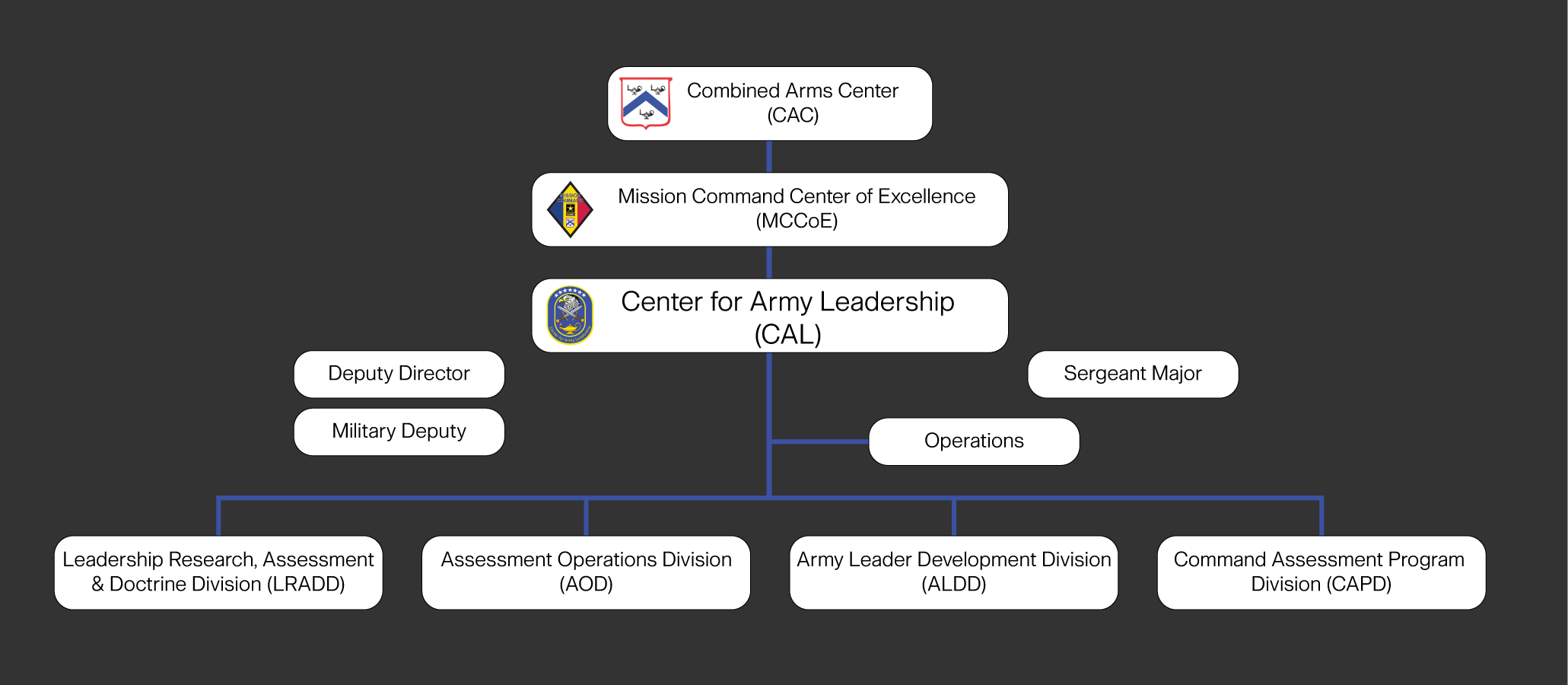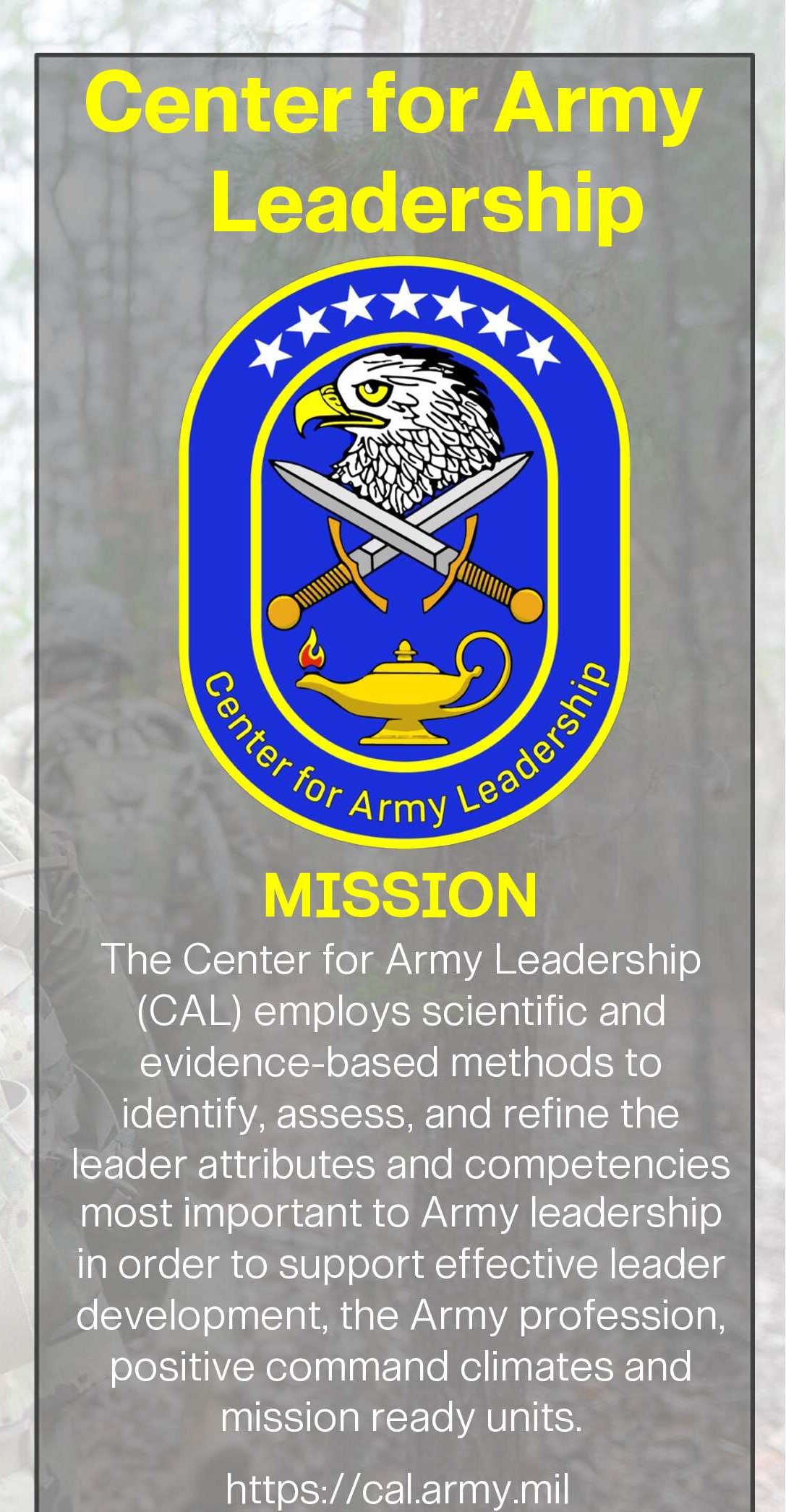
The Center for Army Leadership (CAL), located at Fort Leavenworth, Kansas and aligned under the Combined Arms Center’s (CAC) Mission Command Center of Excellence (MCCoE), has extensive expertise and decades of experience in applying research to shape the Army profession, Army ethic, and leadership. CAL’s research highlights key attributes, competences and assessments that lead to effective Army leadership, leader development, leader selection, and development of doctrine and learning products that contribute to strengthening the Army Profession of Arms.
11 April 2023, CAL expanded when MCCoE combined the Center for the Army Profession and Leadership (CAPL) with its Command Assessment Program Directorate (CAPD) to gain efficiencies in support of Army People Strategy: Military Implementation Plan 2.0. When the two organizations combined, MCCoE restored the name to CAL. In addition to the CAPL mission focus on Army profession, Army ethic, leadership, and CAC Personnel domain, CAL now had the added duties to execute assessments to improve command and key leader selections.
13 December 2020, MCCoE formed CAPD to support the Army People Strategy: Military Implementation Plan. CAPD, in coordination with the Army Talent Management Task Force (ATMTF), executed the Army’s command and key leader assessment program ensuring a world class, fair, and consistent assessment process for key-leader selection. CAPD and CAPL were subordinate organizations aligned under MCCoE, where they developed a close working relationship in support of command and key leader selections.
June 2013, CAL transitioned from CAC–Leader Development and Education to MCCoE and formed a close working relationship with CAPE addressing leadership, leader development, Army profession, and Army ethic initiatives.
16 November 2010, upon publication of TRADOC Regulation 10-5-4, CAL transferred from CGSC to CAC–Leader Development and Education, aligned directly under CAC. Independent of the evolving organizational relationships, CAL conducted leadership and leader development research, analysis, assessment, and evaluation to provide the Army with leadership and leader development doctrine, products and services.
August 2010, CAPE was formed from the Army Center of Excellence for the Professional Military Ethic (ACPME) aligned under CAC, but located at West Point, New York. CAPE took the ACPME mission and assumed responsibilities of shaping the future force regarding the Army ethic. CAPE developed doctrinal products regarding the Army profession to support educational outreach and training products and conducted educational forums for the development of the Army profession and ethic.
May 2008, ACPME was established at West Point, New York to address the unique challenges of shaping impressions of the Army profession and Army ethic in the aftermath of prolonged conflict in Afghanistan and Iraq.
3 June 1984, the Command and General Staff College (CGSC) officially formed CAL as a department. CAL assumed duties as the Army proponent for leadership and ethics. The mission included the development, implementation, and revision of leadership and ethics core curricula and training, field consultation, and staff actions to inform decisions for the U.S. Army Training and Doctrine Command (TRADOC).
1 June 1983, the U.S. Army Center for Leadership and Ethics was established as the proponent for Army-wide leadership and ethics doctrine, training, and integration under the Department of Command, CGSC, CAC, at Fort Leavenworth, KS. This marked the origin of CAL.

(Click for Full View and Download)
The Center for Army Leadership (CAL) employs scientific and evidence-based methods to identify, assess, and refine the leader attributes and competencies most important to Army leadership in order to support effective leader development, the Army profession, positive command climates and mission ready units.